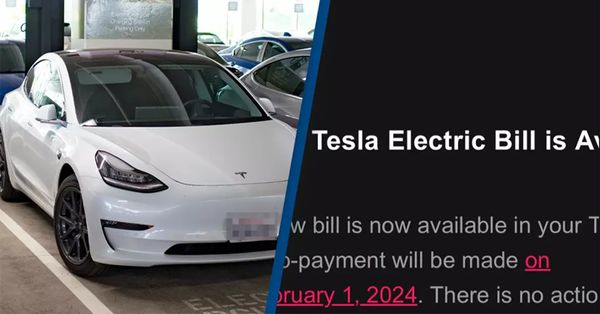Electric cars are no longer just a thing of the future, and people are starting to wonder how they will impact their energy bills. Recently, a Tesla driver shared their first electric bill, and it has sparked a conversation about using Tesla’s Powerwall for home energy needs.

Billed Out
A Tesla owner took to Twitter to reveal the cost of running his Tesla for an entire year. Surprisingly, his electric bill after a year amounted to a mere $2.37 (£1.89). This astonishingly low figure has left many speechless and has led to a debate about the potential high electricity costs of electric cars.
Upon further inspection, it was discovered that the Tesla owner had a Tesla Powerwall connected to solar panels. These panels not only power the house but also store excess energy for charging the Tesla. The internet users responded with humor, suggesting a GoFundMe campaign to support the “struggling” Tesla owner.

The Marvel of Tesla’s Powerwall
Let’s dive into the impressive technology behind Tesla’s Powerwall. It is a sophisticated solar battery system designed to store energy from your home solar panels or roof. With a lithium-ion battery that can hold 13.5kWh of energy at a 100% depth of discharge, the Powerwall ensures you make the most out of your stored energy. And it doesn’t stop at being a backup during power outages; it can also help you go off the grid.
The price tag for a single Powerwall is $11,500, which may vary depending on your location. However, if you’re considering a larger-scale solution, there are discounts for multiple units, making it an enticing option for those seeking a comprehensive home energy solution. Don’t worry; we’ll break down all the costs, including installation and pricing for different quantities.
Tesla Powerwall Ins and Outs
Determining the number of Powerwall units you need depends on your desired usage, whether it’s for backup power during outages or running your entire house off the grid. Experts suggest that for full-house backup power, you may require three to four Powerwalls, while one to two units might suffice for partial coverage.
Tesla offers two models – the standard Powerwall 2 and the advanced Powerwall+ with an integrated solar converter. Both models boast a 13.5kWh capacity, but the Powerwall+ stands out with double the backup power output and more on-grid power. Your choice depends on your energy needs and whether you prefer an all-in-one solution.
Taking a closer look, the Powerwall functions like a lithium-ion battery. It stores solar energy for when you need it and seamlessly connects with your home electrical system. The inverter converts stored DC electricity into AC, ensuring compatibility with your household power supplies. And the rectifier? It converts incoming electricity into DC for storage.
In terms of durability, the Powerwall impresses. Even after ten years, it remains in good condition. Tesla prioritizes durability by implementing regular software updates, utilizing features such as lithium-ion cells, thermal management, and smart charging algorithms that maximize efficiency.
Pros and Cons
There are undoubted benefits to owning a Powerwall, including improved solar efficiency and flexibility in installation. However, there are a few caveats to consider, such as the upfront cost, differences in capacity, and the potential need for multiple units. Before making a decision, it’s crucial to evaluate these factors and determine if the Powerwall aligns with your specific energy needs and budget.
It’s also worth considering the wait times versus the benefits. If you plan to move before 2032, federal tax credits are available, making investing in Tesla solar and Powerwall even more appealing.
A glimpse into a Tesla driver’s electric bill offers insight into a world powered by a Tesla Powerwall. Beyond the surprise of the low cost, we have explored the technology, costs, and the significance of embracing sustainable and efficient energy storage. By making informed choices and utilizing innovative technology like the Powerwall, we can shape a greener tomorrow.






